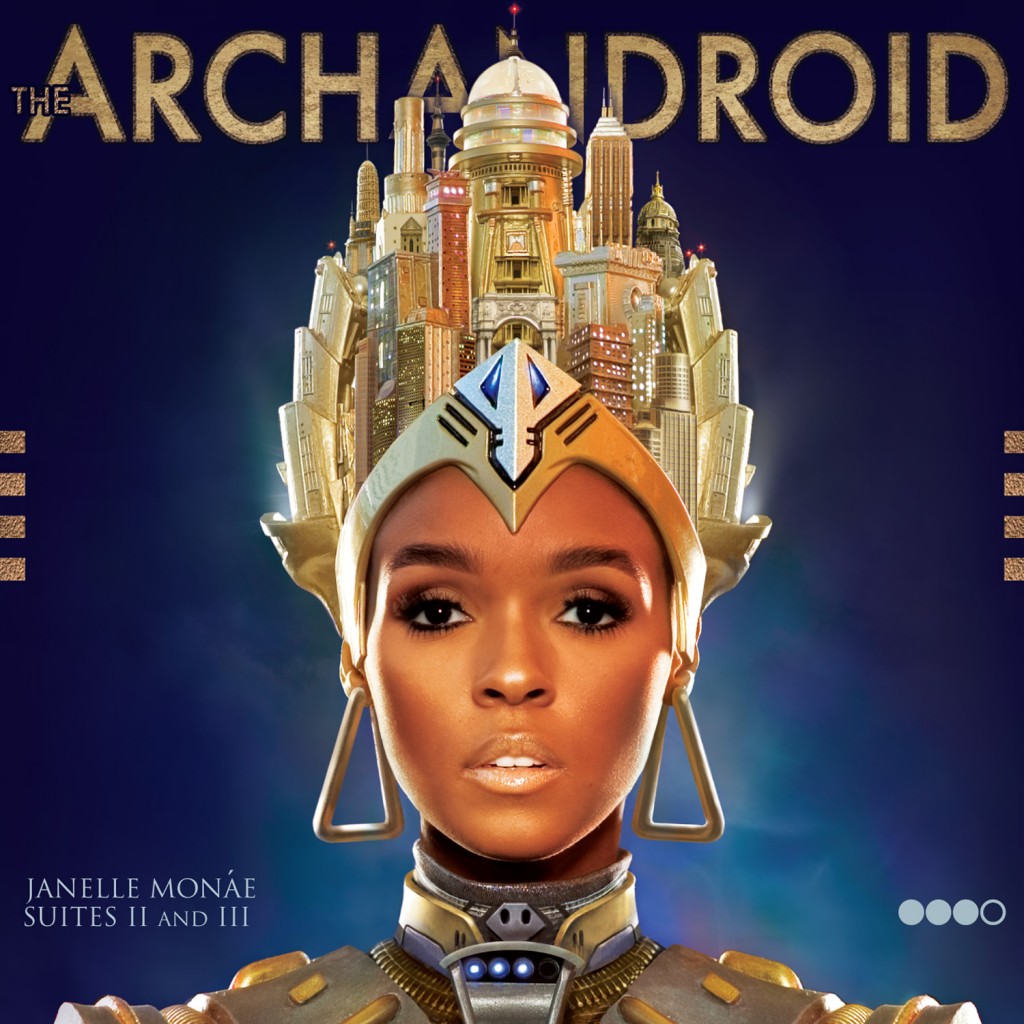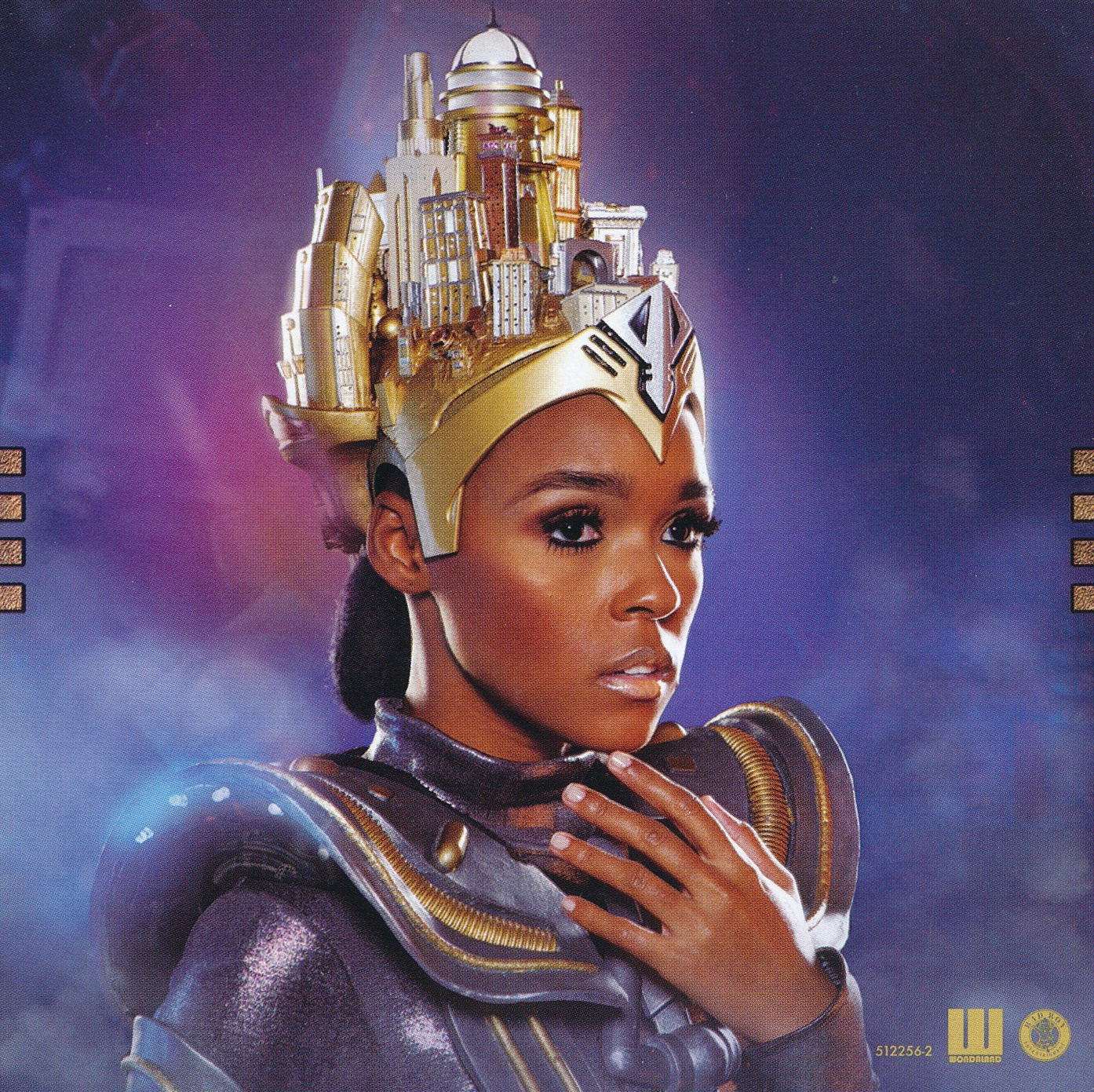TOM BROADLEY explores the significance of Monáe’s sci-fi vision in 2015.

Of all the alter egos musicians have used – Ziggy Stardust, Sasha Fierce – the android 57821, better known as Cindi Mayweather, is one of the most unusual. This robotic messiah is the brainchild of Janelle Monáe. First introduced on The Metropolis Suite, Cindi is part of a futuristic universe that spans both that 2008 EP and her two subsequent albums. At first glance, this all seems like fodder for an overindulgent concept album, but this complex and vivacious sci-fi narrative contains deeper social and cultural meanings. Monáe has been a vocal spokeswoman for Black Lives Matter – a social movement that has grown in response to the killing of black men and women like Michael Brown and Sandra Bland at the hands of the police – and the fiction contained within her music is inextricably linked with her activism.
A brief summary: Cindi Mayweather is an android from Metropolis in the year 2719, an urban conurbation ruled by the Wolfmasters’ Star Commission with its electro-daggers. She commits the capital crime of falling in love with a human, robo-zillionaire Anthony Greendown. While being hunted down by assassins and on the run, she is told that she is the ArchAndroid, a legendary figure who will return to Metropolis – under the moniker of the Electric Lady – and end the discrimination to create a society of peace, love, and dancing. To add to this, Metropolis’ Ministry of Droids and Time Council, the ArchAndroid’s nemeses, are using time travel to suppress any past revolts. In particular, they are trying to quash Project Q.U.E.E.N, a ‘musical-weapons’ programme established by Monáe and Erykah Badu. Oh, and the shadowy secret society, The Great Divide, are working away keeping inequality alive.

It’s not necessarily the most coherent narrative ever; the recap I have provided above only just scratches the surface of Monáe’s creation. She tells it in snatches, not just through song lyrics but also through videos, album artwork and liner notes. The interludes on The Electric Lady take us inside popular Metropolis radio show Good Morning Midnight where DJ Crash Crash talks to the music-loving droids and ‘March of the Wolfmasters’ records the announcement of the hunt for Cindi. The ArchAndroid also abounds with expositions on the story. It’s there in the funky jam of ‘Neon Valley Street’ and the gentle, folk-inflected love songs of ‘57821’ and ‘Sir Greendown.’ Her videos for ‘Many Moons’ and ‘Q.U.E.E.N.’ also take place inside this variegated universe and a leaflet of ‘The Droid Commandants’ has even been distributed at her shows.
A cursory listen reveals Monáe’s influences. Fritz Lang’s 1927 sci-fi film Metropolis is surely the most obvious inspiration. Not only does it share a name with Monáe’s project but also a central mechanical female, in this case Maria, who leads a revolt against the ordered society set up by the overseeing oligarchs of the city. It’s an overtly radical and communist-themed film, elements that inform Cindi’s story. Philip K. Dick’s Do Androids Dream of Electric Sleep and its film adaption, Blade Runner, also inform Monáe’s epic. Beyond that, the whole panoply of Hollywood sci-fi, from early experiments to the epics like Star Wars, is at work.
Look deeper into her music, however, and it’s obvious that this is a radical narrative, one that speaks directly to the current struggle for equality. Monáe is not just influenced by these past works; she riffs on them, twisting them to create her own form of storytelling. So often sci-fi concerns oppressed and beleaguered white, straight and male protagonists who, when compared to the real victims of society, can feel false. The writer Junot Díaz explains this perfectly, saying, ‘without the true nature and reality of who we are as People of Color, nothing about fanboy or fangirl culture would make sense. What I mean by that is: if it wasn’t for race, X-Men doesn’t sense. If it wasn’t for the history of breeding human beings in the New World through chattel slavery, Dune doesn’t make sense. If it wasn’t for the history of colonialism and imperialism, Star Wars doesn’t make sense.’

Monáe takes the legacy of sci-fi and transforms it so that it speaks to everyone in the present day. She doesn’t demonise her central female figure like Lang does; Cindi is a powerful and creative woman of colour. The headdress she wears on the cover of The ArchAndroid is an obvious nod to the Metropolis poster but it also looks to Ancient Egyptian art, incorporating the afro-futurism of artists like Sun-Ra to create a modern day fictional icon. The androids of Blade Runner are morally ambiguous, but in Monáe’s hands they become a symbol of how society denies the Other – people of colour, women and LGBT+ people – their humanity. Cindi’s fear of the state-sanctioned bounty hunters might be dismissed as a sci-fi trope but it becomes all too meaningful when you consider the danger law-enforcement around the world poses to black people.
Thus Monáe transforms the exclusionary into the inclusionary. The message of this narrative is a need for peace and love, the unification of everyone through music, art, and dancing. A fantastical story of the future might not seem to have much in common with the continued murder of black Americans. But as Monáe said this summer, ‘Silence is our enemy. Sound is our weapon.’




